
Hedy Lamarr was an Austrian-born American actress and inventor. After a brief early film career in Czechoslovakia, including the controversial erotic romantic drama Ecstasy (1933), she fled from her first husband, Friedrich Mandl, and secretly moved to Paris. Traveling to London, she met Louis B. Mayer, who offered her a film contract in Hollywood. Lamarr became a film star with her performance in the romantic drama Algiers (1938). She achieved further success with the Western Boom Town (1940) and the drama White Cargo (1942). Lamarr's most successful film was the religious epic Samson and Delilah (1949). She also acted on television before the release of her final film in 1958. She was honored with a star on the Hollywood Walk of Fame in 1960.

Samson and Delilah is a 1949 American romantic biblical drama film produced and directed by Cecil B. DeMille and released by Paramount Pictures. It depicts the biblical story of Samson, a strongman whose secret lies in his uncut hair, and his love for Delilah, the woman who seduces him, discovers his secret, and then betrays him to the Philistines. It stars Victor Mature and Hedy Lamarr in the title roles, George Sanders as the Saran, Angela Lansbury as Semadar, and Henry Wilcoxon as Prince Ahtur.

Ecstasy is a 1933 Czech erotic romantic drama film directed by Gustav Machatý and starring Hedy Lamarr, Aribert Mog, and Zvonimir Rogoz. Machatý won the award for Best Director for this film at the 1934 Venice Film Festival.
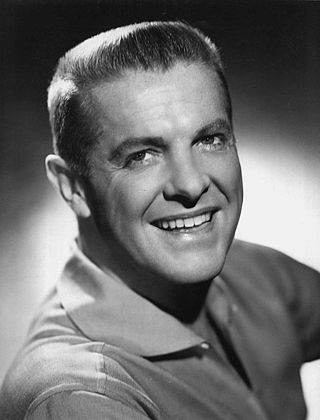
Charles Clarence Robert Orville Cummings was an American film and television actor who appeared in roles in comedy films such as The Devil and Miss Jones (1941) and Princess O'Rourke (1943), and in dramatic films, especially two of Alfred Hitchcock's thrillers, Saboteur (1942) and Dial M for Murder (1954). He received five Primetime Emmy Award nominations, and won the Primetime Emmy Award for Best Actor in a Single Performance in 1955. On February 8, 1960, he received two stars on the Hollywood Walk of Fame for his contributions to the motion picture and television industries, at 6816 Hollywood Boulevard and 1718 Vine Street. He used the stage name Robert Cummings from mid-1935 until the end of 1954 and was credited as Bob Cummings from 1955 until his death.
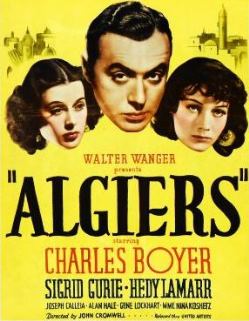
Algiers is a 1938 American drama film directed by John Cromwell and starring Charles Boyer, Sigrid Gurie, and Hedy Lamarr. Written by John Howard Lawson, the film is about a notorious French jewel thief hiding in the labyrinthine native quarter of Algiers known as the Casbah. Feeling imprisoned by his self-imposed exile, he is drawn out of hiding by a beautiful French tourist who reminds him of happier times in Paris. The Walter Wanger production was a remake of the successful 1937 French film Pépé le Moko, which derived its plot from the Henri La Barthe novel of the same name.

Tortilla Flat is a 1942 American romantic comedy film directed by Victor Fleming and starring Spencer Tracy, Hedy Lamarr, John Garfield, Frank Morgan, Akim Tamiroff and Sheldon Leonard, based on the 1935 novel of the same name by John Steinbeck. Frank Morgan received an Academy Award nomination for Best Supporting Actor for his poignant portrayal of The Pirate.
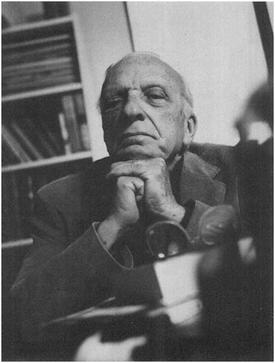
Philip Yordan was an American screenwriter, film producer, novelist and playwright. He was a three-time Academy Award nominee, winning Best Story for Broken Lance (1951).

James Craig was an American actor. He is best known for appearances in films like Kitty Foyle (1940) and The Devil and Daniel Webster (1941), and his stint as a leading man at Metro-Goldwyn-Mayer in the 1940s where he appeared in films like The Human Comedy (1943).
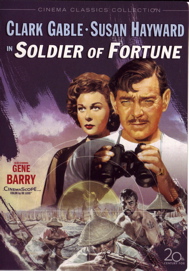
Soldier of Fortune is a 1955 DeLuxe Color adventure film in CinemaScope about the rescue of an American prisoner in the People's Republic of China in the 1950s. It was directed by Edward Dmytryk, starred Clark Gable and Susan Hayward, and was written by Ernest K. Gann based on his 1954 novel.

John Loder was established as a British film actor in Germany and Britain before migrating to the United States in 1928 for work in the new talkies. He worked in Hollywood for two periods, becoming an American citizen in 1947. After living also in Argentina, he became a naturalized British citizen in 1959.

H. M. Pulham, Esq. is a 1941 American drama film directed by King Vidor and starring Hedy Lamarr, Robert Young, and Ruth Hussey. Based on the novel H. M. Pulham, Esq. by John P. Marquand, the film is about a middle-aged businessman who has lived a conservative life according to the routine conventions of society, but who still remembers the beautiful young woman who once brought him out of his shell. Vidor co-wrote the screenplay with his wife, Elizabeth Hill Vidor. The film features an early uncredited appearance by Ava Gardner. In February 2020, the film was shown at the 70th Berlin International Film Festival, as part of a retrospective dedicated to King Vidor's career.
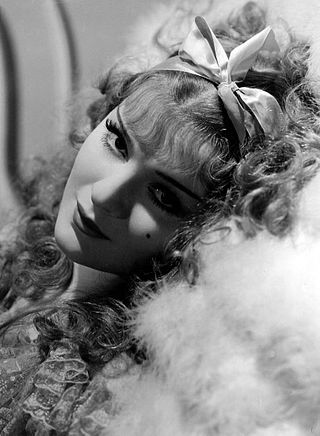
Anna Sten was a Ukrainian-born American actress. She began her career in stage plays and films in the Soviet Union, then traveled to Germany, where she starred in several films. Her performances were noticed by film producer Samuel Goldwyn, who brought her to the United States with the aim of creating a screen personality to rival Greta Garbo. After a few unsuccessful films, Goldwyn released her from her contract. She continued to act occasionally until her final film appearance in 1962.

A Taste of Honey is a 1961 British New Wave drama film directed by Tony Richardson and starring Rita Tushingham, Dora Bryan, Robert Stephens and Murray Melvin. It is an adaptation of the 1958 play of the same name by Shelagh Delaney. Delaney wrote the screenplay with Richardson, who had directed the original Broadway production of the play in 1960. As with the play, the film is an exemplar of a social realist genre of British media known as kitchen sink realism.

Three Russian Girls is a 1943 American World War II pro-Soviet propaganda film produced by R-F Productions and distributed by United Artists. It is a remake of the Soviet film The Girl from Leningrad (1941). It was nominated for an Oscar in 1945 for best musical score. It stars Anna Sten.
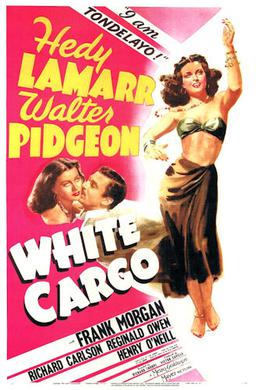
White Cargo is a 1942 American drama film starring Hedy Lamarr and Walter Pidgeon, and directed by Richard Thorpe. Released by Metro-Goldwyn-Mayer, it is based on the 1923 London and Broadway hit play by Leon Gordon, which was in turn adapted from the 1912 novel Hell's Playground by Ida Vera Simonton. The play had already been made into a British part-talkie, also titled White Cargo, with Maurice Evans in 1930. The 1942 film, unlike the play, begins in what was then the present-day, before unfolding in flashback.
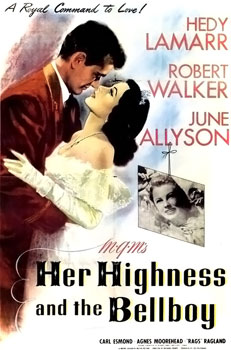
Her Highness and the Bellboy is a 1945 American romantic comedy film directed by Richard Thorpe and starring Hedy Lamarr, Robert Walker, and June Allyson. Written by Richard Connell and Gladys Lehman, the film is about a beautiful European princess who travels to New York City to find the newspaper columnist she fell in love with six years earlier. At her posh New York hotel, she is mistaken for a maid by a kind-hearted bellboy. Charmed by his confusion, the princess insists that he become her personal attendant, unaware that he has fallen in love with her. Her Highness and the Bellboy was released by Metro-Goldwyn-Mayer in the United States on July 11, 1945.

The Strange Woman is a 1946 American historical melodrama film directed by Edgar G. Ulmer and starring Hedy Lamarr, George Sanders and Louis Hayward. It is based on the 1941 novel of the same title by Ben Ames Williams. The screenplay was written by Ulmer and Hunt Stromberg. Originally released by United Artists, the film is now in the public domain.

Picture Mommy Dead is a 1966 American psychological horror film directed by Bert I. Gordon and starring Don Ameche, Martha Hyer, Susan Gordon, and Zsa Zsa Gabor. It follows a young girl who, after being released from a psychiatric hospital following her mother's death, begins to experience strange events in the family's mansion.
Nana is a 1934 American pre-Code film, produced by Samuel Goldwyn, released through United Artists, starring Anna Sten. and directed by Dorothy Arzner and George Fitzmaurice.

Abroad with Two Yanks is a 1944 American comedy film directed by Allan Dwan and starring Helen Walker, William Bendix and Dennis O'Keefe as the title characters. It was Bendix's third and final role in a film as a US Marine and the first of Dwan's three films about the United States Marine Corps.



















